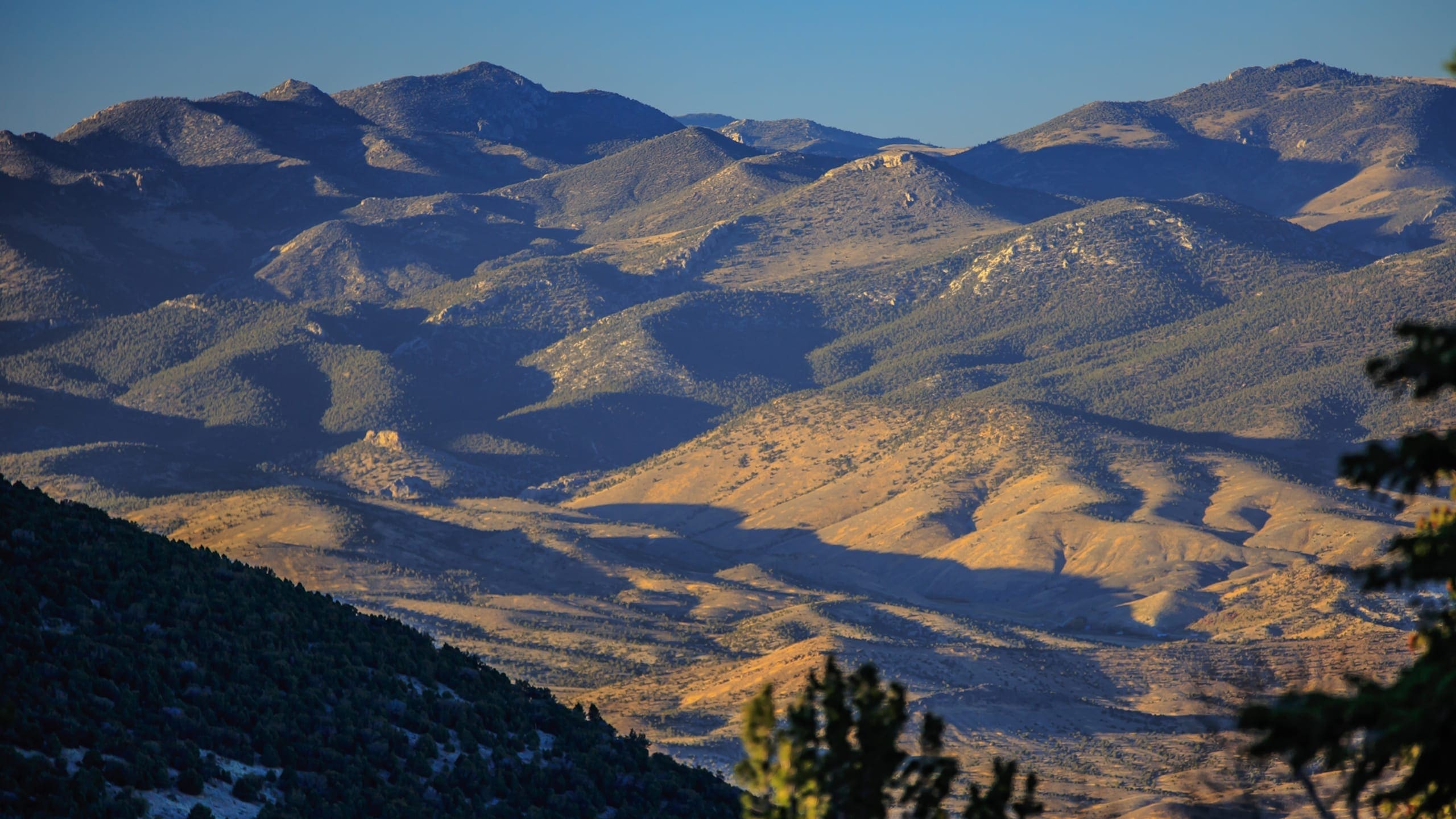About Great Basin National Park
Great Basin National Park, established by Congress in 1986, lies within a vast geographic region known as the Great Basin, the only region in North America where water has no outlet to the sea. Consisting of a seemingly endless expanse of mountains and desert valleys, the Great Basin also holds the distinction of being the largest desert in the United States.
The story of the Great Basin includes ecology, geology, and more than 13,000 years of human history. The park’s natural environments range from sagebrush flats on the desert floor, through extensive conifer forests, to the alpine peaks of the South Snake Range, including Wheeler Peak—the second highest mountain in Nevada. The ecology of the South Snake Range is an excellent example of “island biogeography,” where the surrounding desert has isolated species in areas of higher elevation, forcing them to develop unique adaptations to survive. This varied landscape is home to a rich diversity of plant and animal communities, including ancient groves of bristlecone pine, the oldest living trees on the planet.
Great Basin National Park showcases an exceptional combination of geological features, with more than 40 known caves, including beautiful Lehman Caves. Archeological sites, rock art, and traditional cultural places in the park illustrate the past and continuing presence of American Indian peoples, including the Shoshone and Paiute. Miners, cattle ranchers, farmers, and sheepherders have left their own distinctive mark on the landscape. Collectively, the park’s ecological and geological diversity, remoteness, and challenging environmental conditions highlight the importance of adaptation—for plants and animals, as well as for people—and offer an ideal setting for researchers to observe and study the effects of climate change.
Great Basin National Park is located in a remote area along the eastern border of Nevada with limited services, so visitors must plan ahead. Those who make the journey are rewarded with a variety of recreational and educational opportunities, including rigorous alpine hiking, fishing in backcountry streams, camping, stargazing, sightseeing along the Wheeler Peak Scenic Drive, cave tours, and several other ranger-led programs.
Source: Foundation Document Overview – Great Basin National Park
Fast Facts:
| Date the Park was Established: | October 27, 1986 |
| Park Area (as of 2019): | 77,180.00 acres (312.3 km2) |
| Recreational Visitors (2018 Total): | 153094 visitors |

